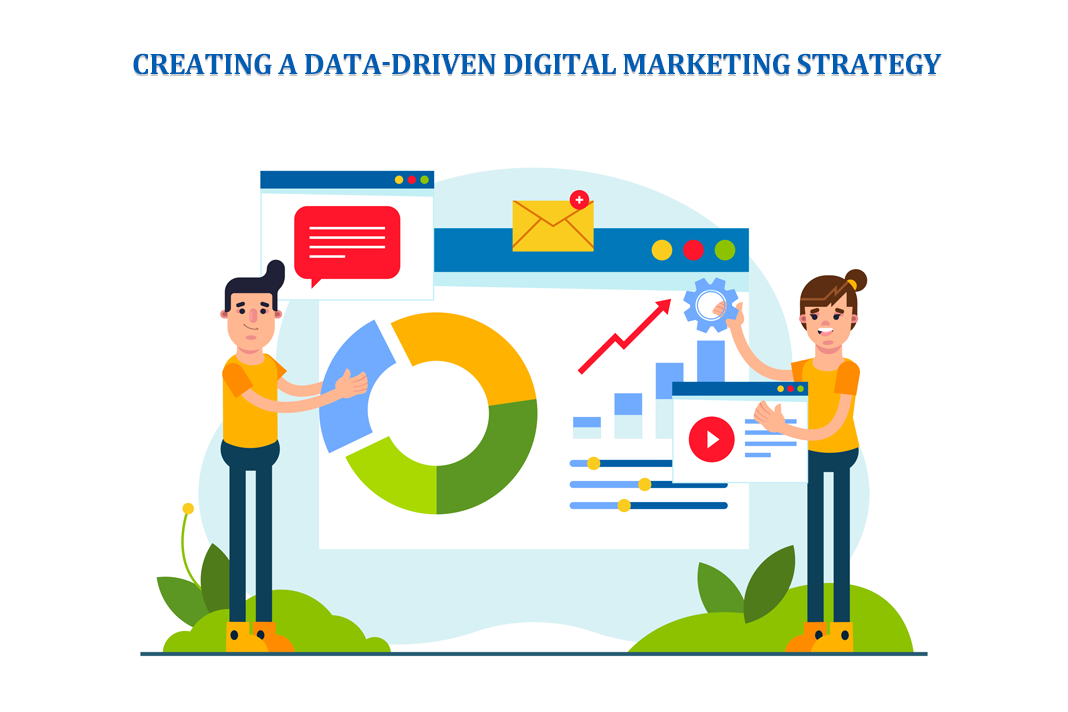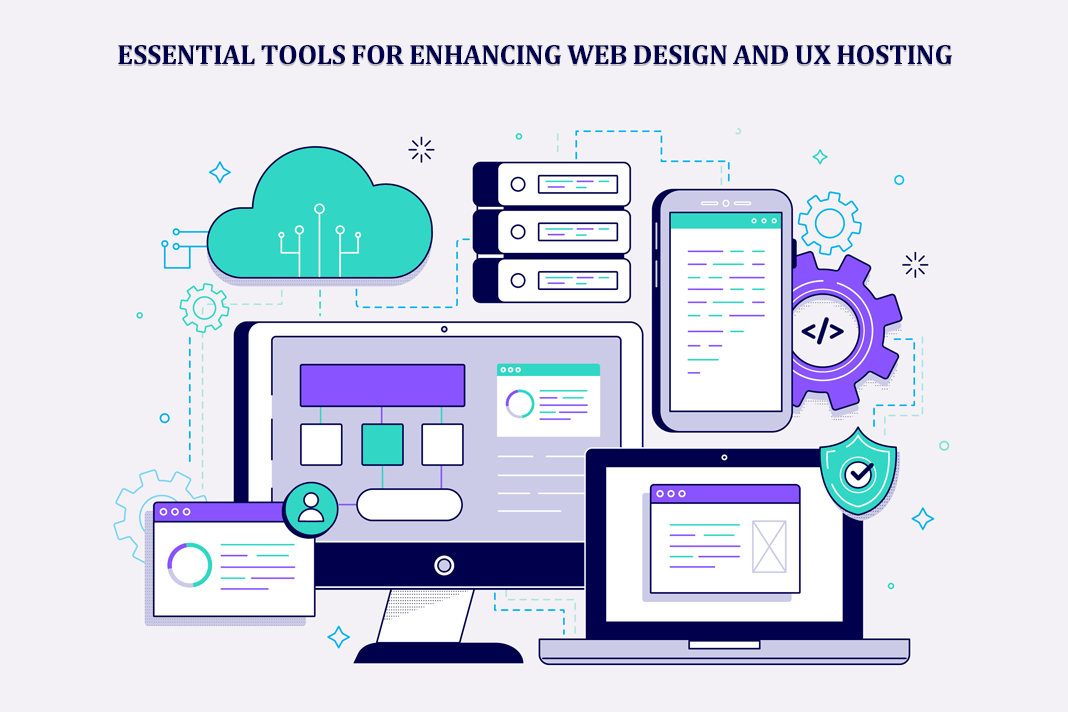Creating a Data-Driven Digital Marketing Strategy
Why should you depend on data in digital marketing? In today’s intense competition, how do you ensure your marketing campaigns succeed? The response to this lies in using data. Unlike gut feelings or assumptions, data-driven digital marketing uses accurate information to make choices. This method enables businesses to focus on their audiences better, personalize campaigns, and use resources effectively. Researching data enables the discovery of trends, prediction of customer behavior, and measurement of the impact one’s efforts have made. This helps make more informed choices with a higher return on investment and improved customer satisfaction. As more and more companies shift towards digital, understanding how we can leverage the power of Data becomes necessary. Therefore, how can you create an effective digital marketing strategy based on data?
Quick Links
Understanding the Importance of Data in Digital Marketing
When you use data in digital marketing, you can get helpful information to help you plan your approach. It enables you to determine what your audience wants, how they act, and what they need. By looking at data, you can find out which channels work best, what material people like, and how they connect with your brand. You can ensure that your ads reach the right people at the right time by customizing them based on your knowledge. Data can also help you figure out how well your marketing is working. It’s like working in the dark without data—you must guess what to do instead of using facts. A data-driven method gives you an edge over competitors and lets you keep improving your marketing strategies. Keeping ahead in a digital world that changes quickly means making choices based on facts.
Collecting the Right Data: What to Focus On
The first step to making a data-driven plan work is getting the correct data. But what should you pay attention to? First, list critical measures that help you reach your business goals. Some of these are website traffic, conversion rates, customer data, and how active people are on social media. This information can be gathered with the help of Google Analytics, social media views, and customer relationship management (CRM) tools. Also, you need to separate your data by population, behavior, and other essential factors. This division makes it possible to analyze things more precisely and make better choices. However, more is needed to gather data; you must also collect good data. Make sure your info is correct, up-to-date, and valuable. You can make exact changes to your marketing plan when you have good data, which leads to better results.
Analyzing Data: Turning Information into Actionable Insights
After getting the correct information, the next step is to analyze it. But how do you turn this data into knowledge that you can use? First, data analysis tools should be used to look for patterns and trends. Look for links between different pieces of information, like how a particular group of people interacts with your content or which outlets lead to the most sales. You will learn what works and what doesn’t from this study. Using charts, graphs, and tools to see your info is also important. Visualization helps you understand complicated data and share your results with your team more easily. The goal is to find patterns in the data that can help you plan your approach. If you know the story behind the numbers, you can make choices based on facts that will help your marketing.
Personalizing Campaigns Through Data
When it comes to digital marketing, personalization is beneficial, and data is the key to making it happen. By looking at information about your customers, you can create events that are more relevant to them. This could include customizable emails, ads, or material made just for them. Personalization makes people more interested, loyal, and likely to buy. But how do you personalize? To begin, divide your audience into groups based on information like age, gender, income, and past purchases. Then, make material and offers tailored to each group’s wants and needs. Send custom texts to a lot of people at once with automation tools. Remember that personalization is more than just calling a customer by name; it also means giving them experiences that are important and valuable. Personalization based on data lets you connect with your audience more deeply, which leads to long-term success.
Leveraging Data for SEO and Content Marketing
Search engine optimization (SEO) and content marketing are two essential parts of digital marketing that can be improved with data. For SEO, data tells you which keywords bring people to your site, how they move around, and where they leave off. With this knowledge, you can make changes to your website that will help it rank higher and give users a better experience. Data can help you plan your content when you’re doing content marketing. You can make more of what your audience loves by looking at what information they like best. Data can also help you find holes in your content, issues your rivals are writing about, and industry trends. When you use data in SEO and content marketing, you can be sure that your work is focused, practical, and successful. It lets you make content that gets people’s attention, keeps them interested, and turns them into customers.
Measuring and Optimizing Campaign Performance
Measuring and improving your efforts is an integral part of a data-driven plan. How, though, do you do this well? First, ensure each plan has clear goals and KPIs (Key Performance Indicators). Use data, like conversion rates, click-through rates, and ROI, to track how well these KPIs are being met. Review your info often to find ways to make things better. Look at the data to determine why a promotion differs from what is planned. It could be because of problems with tracking, messages, or how well the channel works. You can try different methods with A/B testing to find the best one. The key is to be flexible and quick to act, using data to make changes as needed. You can make your efforts more successful and get better results by measuring and improving them constantly.
Integrating Data Across Channels for a Unified Strategy
In a digital world with many outlets, it’s essential for a unified plan that data is shared across all of them. But how can you be sure of consistency? First, use a central tool or CRM to gather and organize data from all your sources, such as your website, social media, and email. With this connection, you can see the whole journey of a customer and see how the different platforms work together. It also helps you keep your brand and messages the same across all devices. Integrating data lets you make programs that work better and fit together better. For instance, you can send personalized messages to people who connect with your business on one site after they use it on another. A uniform, data-driven plan ensures that all your marketing efforts work together smoothly, giving your audience a consistent and robust experience.
Overcoming Challenges in Data-Driven Marketing
Data-driven marketing has a lot of perks, but it also has some problems. Overloading with info is a regular problem. It can be hard to know what to focus on when there is so much info to choose from. To fix this, put quality over number and pay attention to the most critical measures for your business. Data protection is also a problem. Companies must handle customer data properly as rules like GDPR become more strict. You must be open and follow the rules to build trust with your audience. It can also be hard to combine info from different sources. It would help to have the right tools and knowledge to ensure correct and consistent information. You can get the most out of data-driven marketing while keeping trust and speed high if you face these problems head-on.
The Future of Data-Driven Digital Marketing
More and more data will be used in digital marketing as technology boosts. The question is, what will happen next? Machine learning and artificial intelligence (AI) will change how data is analyzed, making targeting and personalizing even more accurate. With predictive analytics, companies can guess what customers want and see what trends will happen, which helps them stay ahead of the competition. Data will increase as more gadgets join the Internet of Things (IoT). This will give you even more information about how customers act. However, these improvements also mean that people handling data must be more responsible. Businesses must ensure they honestly use data and protect customers’ privacy. Data will be the key to the future of digital marketing, and people who can adapt will do well as things change.
Conclusion
Data-driven digital marketing isn’t just a trend; it’s a must in this digital world. Businesses can make intelligent choices, tailor ads to specific groups of people, and use data to make the best use of their resources. Every step of the process is essential, from gathering the correct data to studying it to finding ideas that can be implemented. A data-driven method suits personalization, SEO, content marketing, and measuring success. There are problems, like too much data and worries about privacy, but they can be solved with the right plans. Data will become even more critical in digital marketing as technology improves. Businesses can be successful in the long run and stay competitive in the digital world that is constantly changing by using data-driven strategies.
Why WooCommerce is the Best Choice for Your Online Store?
WooCommerce stands out as a top option for anyone looking to build an online store. This platform…
0 Comments8 Minutes
How to Use AI-Powered SEO Tools for WordPress eCommerce
SEO is a critical factor in the success of any e-commerce WordPress store. As competition…
0 Comments11 Minutes
Why Short-Form Videos Are the Future of Content Marketing
Your Instagram customers spend over 50% of their time watching short-form videos and reels. Rather…
0 Comments12 Minutes
The Role of Digital Marketing in Business Growth
Online marketing touches every aspect of a business, whether it is initiating the idea or for an…
0 Comments3 Minutes
AI Meets Authenticity: Balancing Automation and Human Touch in Content Marketing
Is your brand starting to sound like a robot? In a world where algorithms write faster than any…
0 Comments8 Minutes
Essential Tools for Enhancing Web Design and UX Hosting
Have you ever visited a website that felt slow, clunky, or confusing? A website that is poorly…
0 Comments11 Minutes
How a Mini Cart Transformed My Store’s Shopping Experience
Okay, real talk—running an online store is hard. You think you’ve got everything figured out, you…
0 Comments9 Minutes
Balancing Your Security Initiatives With Industry Compliance Requirements
Managing a business today comes with a number of daily battles that need to be fought. Resources…
0 Comments11 Minutes








